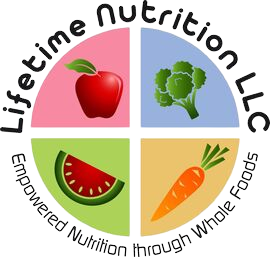|
You go to the supermarket once a week for food. Once inside you are bombarded with marketing claims. I’m not talking about the seals like Certified organic, or Non Gmo verified. These are important to look for and pay attention to. I’m talking about the signs you see in the aisle in front of the food. They’ll say things like PALEO, VEGAN, NON GMO (even when the crop was never genetically modified in the first place). Really anything customers are looking for; a sign will go up in front of a product. Oh look at me, I’m LOW FAT! I’m in Whole Foods a couple of weeks ago in the sauce aisle and I see two signs. One says VEGAN, the other says PALEO. I’m intrigued because I wouldn’t think there is a difference aside from the packaging. Although in the Paleolithic period they probably didn’t have tomatoes because that’s a modern agriculture food and they certainly would not have had cans or glass to put the tomatoes in; but tomatoes seem to be on the Paleo food list possibly because no one really knows exactly what Paleolithic people ate, it’s just one big guess. So I have two items right next to each other both seemingly the same but they are being marketed differently. Why are they being marketed differently? To appeal to the different trends! Don’t fall for it! Although they are all tomato sauces, they are not created equal. Let’s take a look:
Do you see the difference?
You can’t really tell much from the nutrition facts as far as what is inside, But here is a big difference you can see: the serving size is smaller for the PALEO one but is still much higher in sodium than the other two. Everything else when adjusting for the serving size would work out about the same. Let’s look at the ingredients; the one marketed as PALEO has added sugar which is not allowed and citric acid which is a food additive also not allowed on the diet. So since tomato is allowed on the PALEO diet, sauce would be too so either of the two marked VEGAN would fit the PALEO bill, but not the one that was actually being marketed as PALEO! Crazy right? So don’t pay attention to the signs marketing what product to buy, turn the product around and look at the ingredients list, compare them to other similar products and then make your decision!
0 Comments
One of my jobs as a nutritionist is educator, to think about things that aren’t being talked about. When it comes to food, nothing is cut and dry. Studies can help us in making an educated decision, but they are typically biased in favor of what those who paid for it want. So you wind up with lots of studies that contradict each other and what you hear about are the studies that are well funded. Or you will hear the contradicting studies for instance one day it seems eggs are good for you and the next they are not. So for the above question, I don’t have a definitive answer, and I don’t think anyone else does either but I would like to talk about some concerns I have regarding this.
So let’s talk about fish oil supplementation. For many who don’t consume fish, they turn to supplementation. Even if they do consume fish doctors typically recommend fish oil supplements to decrease inflammation, because today everyone has inflammation! Here’s the problem with this, to get the oil from the fish, the entire fish is minced and the oil is extracted using heat and chemical solvents. The Omega 3 fatty acid is an extremely sensitive oil and can become rancid from exposure to heat, light and oxygen. So the oil is more than likely rancid prior to being put into the capsule to be sold. And low quality supplements don’t remove the toxins that were originally in fish or the chemical residue so toxins are increased. Professional products do test for toxins and typically there is no chemical residue, but the concern about rancidity is still there. I have tested the Omega fatty acid profile on clients and most are deficient in Omega 3 even in people taking fish oil supplements and consuming fish on a daily basis They also have high inflammation markers and Omega 6 fatty acids (inflammatory) are higher than their Omega 3 fatty acid (anti-inflammatory) numbers. So a change of diet is typically needed. Omega 3 (and 6) fatty acids are essential fatty acids, meaning the body can’t make them. So it’s important for you to get them, but fish is not the only source. In fact, the fish don’t produce it; they eat algae on the ocean floors that contain it. Wouldn’t it be better to skip the fish and use the algae as your Omega source? Algae can be grown in a lab in controlled conditions so there is no contamination issue. You could also consume Spirulina and sea vegetables which have an added benefit of lots of micronutrients. There are other plant sources but conversion is necessary for it to become an Omega 3 and there are various reasons that would diminish capability of conversion. For example: Deficiencies micronutrients such as zinc, magnesium, calcium, biotin, B 3, B6, Vitamin C; medications, alcohol, advancing age, high sugar consumption, genetics, high omega 6 consumption, etc. Plant based sources have many benefits even if you don’t convert the Alpha Linoleic Acid (the parent form) easily. Plant sources: Flax seeds, Chia seeds, Hemp seeds, green leafy vegetables, walnuts, avocado, chlorella So what do you think? Sources: Killer fish, Brian R. Clement, 2012 https://plenteousveg.com/vegan-sources-omega-3/ https://www.precisionnutrition.com/all-about-algae https://www.epa.gov/fish-tech/2017-epa-fda-advice-about-eating-fish-and-shellfish https://www.livescience.com/39110-japan-2011-earthquake-tsunami-facts.html https://www.epa.gov/ocean-dumping/learn-about-ocean-dumping#Before |
AuthorKerri Ferraioli Archives
March 2023
Categories |

 RSS Feed
RSS Feed